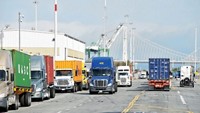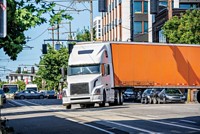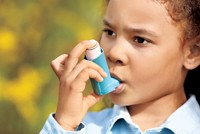Advertisement
Grab your lab coat. Let's get started
Welcome!
Welcome!
Create an account below to get 6 C&EN articles per month, receive newsletters and more - all free.
It seems this is your first time logging in online. Please enter the following information to continue.
As an ACS member you automatically get access to this site. All we need is few more details to create your reading experience.
Not you? Sign in with a different account.
Not you? Sign in with a different account.
ERROR 1
ERROR 1
ERROR 2
ERROR 2
ERROR 2
ERROR 2
ERROR 2
Password and Confirm password must match.
If you have an ACS member number, please enter it here so we can link this account to your membership. (optional)
ERROR 2
ACS values your privacy. By submitting your information, you are gaining access to C&EN and subscribing to our weekly newsletter. We use the information you provide to make your reading experience better, and we will never sell your data to third party members.
Pollution
Covid-19
Air pollution disparities persisted during COVID-19 lockdowns
Even as average levels of NO2 fell, marginalized communities experienced relatively high levels of the pollutant
by Katherine Bourzac
July 27, 2021

Last spring, during government-imposed lockdowns designed to slow the spread of SARS-CoV-2, the virus that causes COVID-19, some people saw a silver lining: fewer cars on the road meant cleaner air and clearer views. On average, urban areas in the US saw levels of the pollutant nitrogen dioxide fall sharply.
But new research shows that even as urban NO2 concentrations dropped by an average of about 25% in urban areas, the pollution-slashing benefits of the lockdowns were not distributed equally. Neighborhood-scale NO2 disparities along racial, ethnic, and socioeconomic lines persisted, driven by the relative density of highways and roads in marginalized communities (Proc. Natl. Acad. Sci. U.S.A. 2021, DOI: 10.1073/pnas.2022409118). Researchers behind the study, which drew on NO2 data from the European Space Agency’s TROPOMI satellite and demographic information from the US Census Bureau, hope their work will help guide policies to reduce air pollution inequality in urban areas.
NO2 is a byproduct of combustion. Industry and traffic, particularly heavy-duty diesel trucks, are the largest NO2 emitters and levels of the gas tend to be higher in urban areas. The pollutant is associated with respiratory diseases including asthma, and premature mortality. And NO2 is involved in atmospheric reactions that drive the production of other pollutants—including ozone and particulate matter—that are associated with detrimental health effects.
Environmental health researchers—and people who live in communities impacted by air pollution—already know that there are often stark disparities in pollution levels between neighborhoods. For example, a 2020 study found that NO2 levels were 37% higher in low income, non-White neighborhoods in Houston compared with wealthier, White areas of the city.
The new study shows that even when there are significant reductions of the pollutant across a city, disparities persist, says Gaige Kerr, a postdoctoral researcher at George Washington University who led the study with environmental health scientist Susan Anenberg. Before the pandemic, researchers found that the census tracts in the US with the smallest proportions of White people had NO2 levels three times higher than the tracts with the most White people. Neighborhoods predominately populated by people of color also experienced the greatest total reductions in NO2 levels during lockdowns. But inequities remained. Even during lockdowns, these neighborhoods had one and a half times higher NO2 levels than the pre-pandemic average for the Whitest neighborhoods. During the lockdowns, the strongest correlations for relatively high NO2 levels were with race and ethnicity, but there was also an association with income level.
“This gives an insight into just how entrenched, how substantial these inequalities are,” says Sally Pusede, an atmospheric chemist at the University of Virginia who was not involved in the work.
The study points to traffic as a key NO2 source behind these disparities. “The culprit in explaining unequal NO2 levels in urban areas is the placement of highways and roads,” Kerr says. The team measured how many such thoroughfares were located 1 km from the center of a census tract, and found that the least White neighborhoods had five times more roads than the most White neighborhoods.
Heavy-duty trucking, in particular, drove pandemic disparities, the George Washington group found. These diesel-fueled vehicles emit higher levels of NO2 compared with passenger vehicles. During lockdowns, passenger vehicle traffic fell by about 50%, but heavy-duty trucking saw a much smaller drop of 5–10%, Kerr says. Even during lockdowns, NO2-emitting trucks continued driving through marginalized communities.
Pusede says the traffic connection is significant and shows that satellite air pollution data can provide a means to observe the sources of environmental inequalities. Getting large-scale data about sources on this scale has been challenging, and it’s something that researchers have only been able to model before. “We have lacked the opportunity to test the sources of this injustice,” she says.
Kerr says cities could address the disparities found in the study by banning heavy-duty trucks from driving through air pollution-burdened neighborhoods. Electrification of the trucking industry will help, too.
“There’s no doubt that proximity to diesel trucking is dangerous to people’s health, from before birth,” says Aileen Nowlan, a policy analyst at the Environmental Defense Fund, a research and advocacy organization. The EDF, the Union of Concerned Scientists, and other groups have called on the Biden administration to adopt standards that would require all new heavy-duty trucks on the road to be zero-emissions vehicles by 2040, and for all trucks to meet that standard by 2050. Nowlan says as companies begin the transition to electric vehicles, they should prioritize using them in communities that currently have the highest air pollution burdens.
Cesunica Ivey, who researches air pollution disparities at the University of California, Berkeley, says there’s no doubt federal regulation of the trucking industry would help. However, she says, city case studies in Kerr and Anenberg’s research point to the need for local solutions, too. In New York, for example, the largest drops in NO2 during the lockdowns occurred in Harlem and South Bronx neighborhoods where not only major highways, but also industrial facilities, are concentrated. In Atlanta, the analysis pointed to the importance of the airport as an NO2 source for low income, primarily Black neighborhoods in the city’s southwest.
“You can’t generalize a solution when the disparities are so heterogeneous,” Ivey says. “A combination of local and national solutions is going to be needed to eliminate these disparities.”





Join the conversation
Contact the reporter
Submit a Letter to the Editor for publication
Engage with us on Twitter